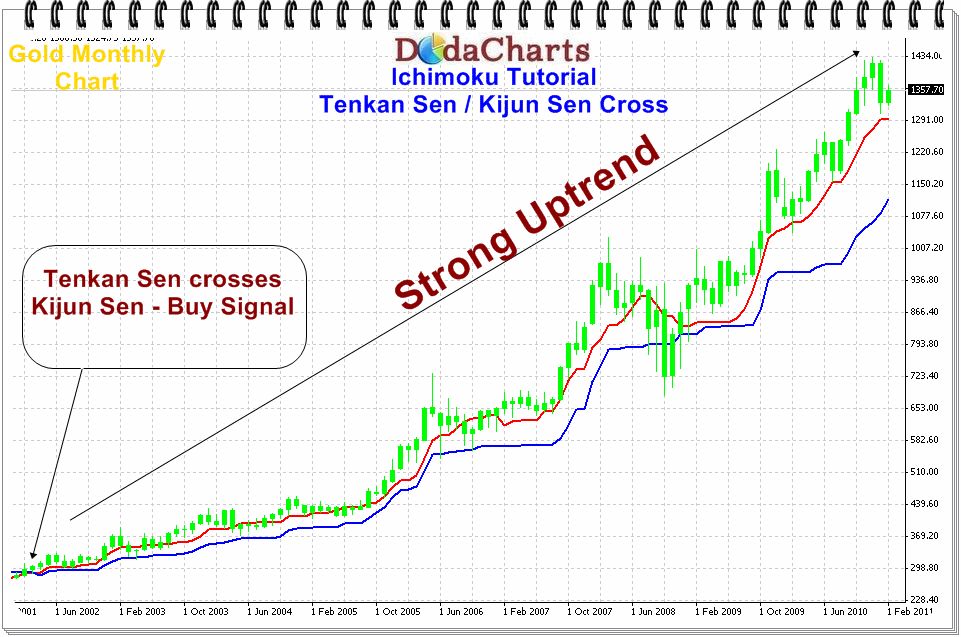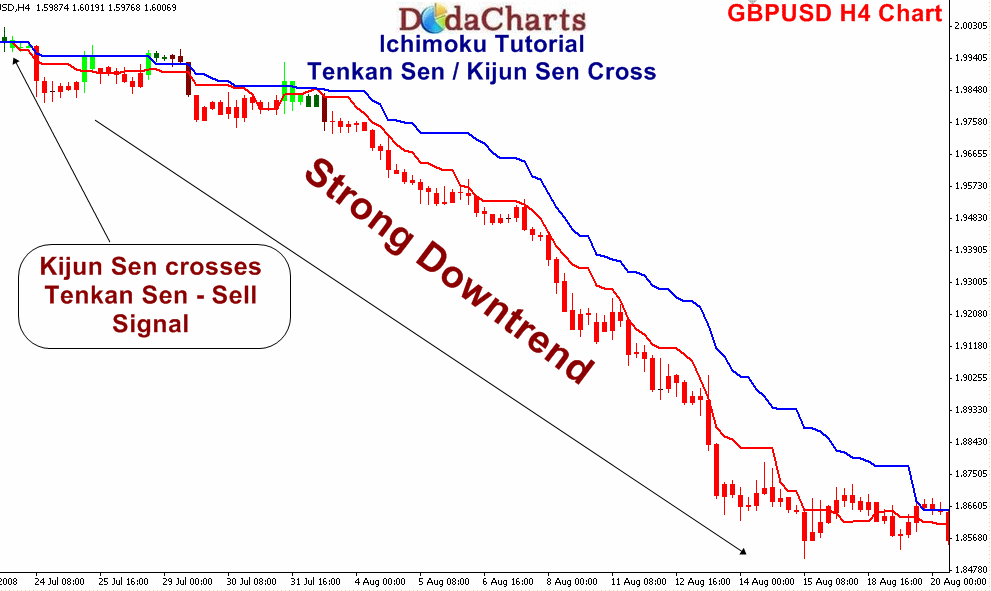Ichimoku Kinko Hyo Tutorial Part-2
This is part 2 of the series on Ichimoku Kinko Hyo tutorial. In the previous part, we’ve discussed the history and components of Ichimoku indicator. Here, I’ll elaborate on mathematical portion of this indicator and rule no. 1 for trading via Ichimoku.
Mathematic component of Ichimoku
**Tenkan Sen ** = (HIGHEST HIGH + LOWEST LOW)/2 for the past **9 **periods
Kijun Sen = (HIGHEST HIGH + LOWEST LOW)/2 for the past **26 **periods
Senkou Span A = (Tenkan Sen + Kijun Sen)/2 time-shifted **forward 26 **periods (into the future)
Senkou span B = (Highest High + Lowest Low)/2 for the past **52 **periods time-shifted **forward 26 **periods (into the future)
This will create the Kumo 26 periods ahead of current price, therefore giving us direction with regards to future support and resistance.
**Chikou Span ** (“lagging line”) = Current closing price time-shifted **backwards 26 **periods (into the past)
History of 9, 26, 52
At this point, many of you are probably wondering how the number of periods 9, 26 and 52 came about in the various formula. As this indicator was made before WWII, Japanese financial markets were open for trading on Saturdays, meaning that the trading week was six days long.
9: represents a week and a half of trading
26: represents the number of trading days in a predictable month (30 minus four Sundays)
52: represents two months of trading days
Japanese markets today trade only 5 days per week and 22 days in a predictable month, so some practitioners of Ichimoku Kinko Hyo suggest revising the parameters to 7 or 8, 22 and 44. Others choose to stay on the Fibonacci numbers of 8, 21 and 55. You can try the various parameters at your own. I’ll stick my trading and tutorial section on default settings 9, 26, 52.
Trading Rules of Ichimoku
There are some rules to use Ichimoku and ALL of them should be used together to trade. Don’t worry. There are not so many rules and they are very simple to use. To start with, the first rule is "Crossing of Tenkan-Sen line and Kijun-Sen line". This rule is very similar to use of 2 different moving average on screen – buy or sell on crossing of lines. That’s it. Isn’t that simple?
Rule No. 1
BUY when Tenkan Sen (TS) line crosses Kijun Sen (KS) line (i.e. TS is above KS) AND price closes ABOVE Kijun sen line.
SELL when Kijun Sen line crosses Tenkan Sen line (i.e. TS is below KS) AND price closes BELOW Kijun sen line.
Example 1
Below is the monthly chart of Gold from 2002 to now i.e. March 2011. I’ve removed other components of Ichimoku i.e. Kumo, Chikou Span, Senkou Span A and Senkou Span B from the chart. Just 2 lines Tenkan Sen and Kijun Sen.

Around the beginning of 2002, tenkan sen line crosses kijun sen line i.e. tenkan sen line was ABOVE kijun sen line AND price closes above kijun sen – that was the BUY signal. Result – we witnessed a strong uptrend from $298 to recent high of $1434. In 2008, although price went down for some time below these 2 lines but there was no crossing of lines to confirm the change of trend. So, it resumed it uptrend in the beginning of 2009.
Example 2

The above chart is self explanatory like the previous chart.
Now, I’m sure you can easily spot the beginning of trend using TS and KS lines of Ichimoku. In the next part of this series, I’ll discuss rule no. 2.